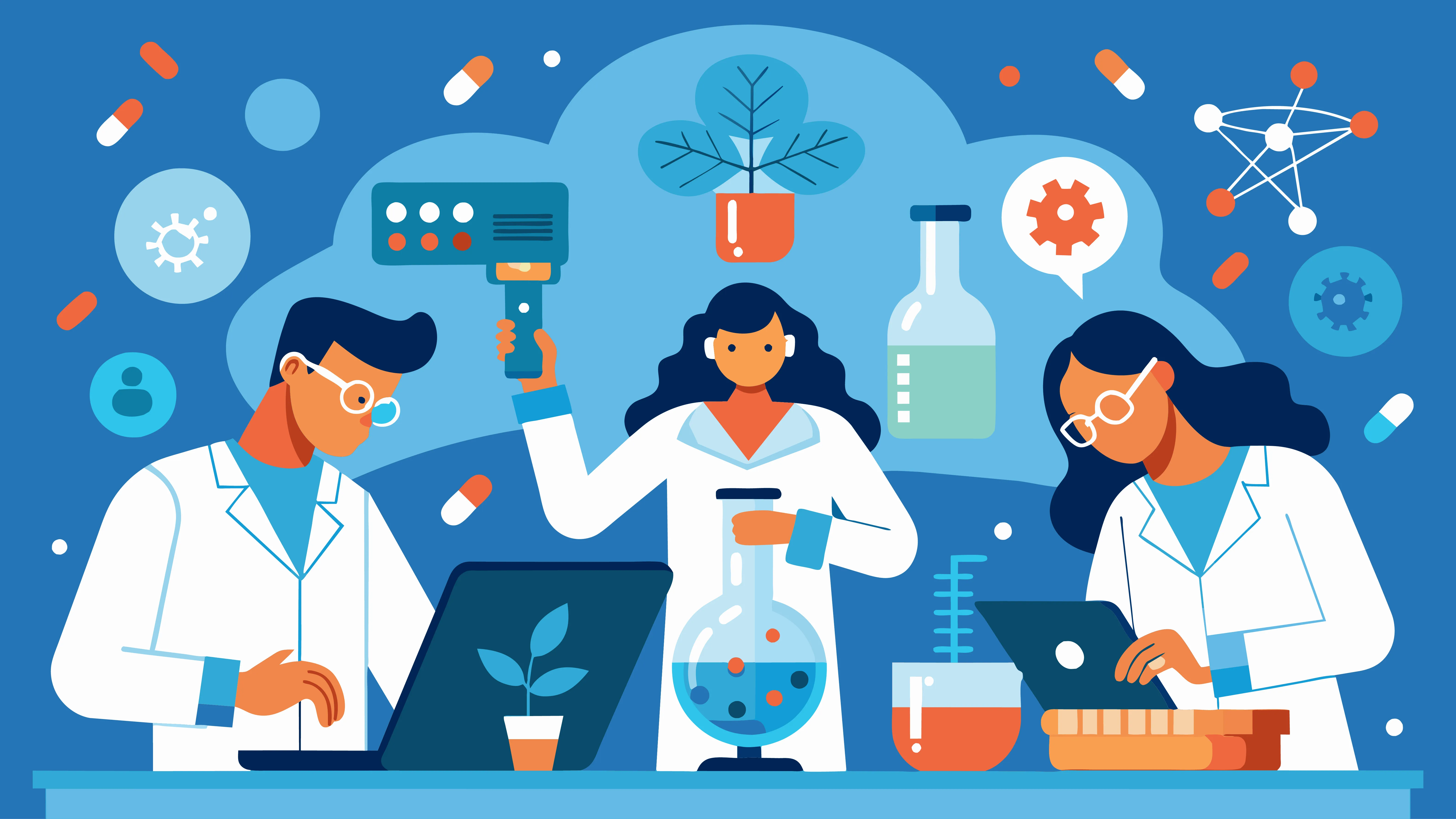Bioinformatics has become a linchpin in modern drug discovery, particularly in the critical early stages of target identification and validation. As the drug development landscape becomes more complex, integrating computational tools with biological research has significantly accelerated and refined the path from hypothesis to therapeutic candidate. Within the context of the Drug Discovery Innovation Programme, bioinformatics serves as a catalyst for innovation and collaboration—especially when identifying novel molecular targets and confirming their relevance in disease pathways.
Below, we explore the pivotal role of bioinformatics in target discovery and validation through key components and approaches that are transforming pharmaceutical R&D.
🔬 Understanding Target Identification
Target identification involves recognizing the molecular structures (usually proteins, genes, or RNAs) that play a fundamental role in disease progression and can be modulated by therapeutic intervention. Bioinformatics provides powerful methodologies to sift through massive biological datasets to pinpoint these targets.
Genomics-Based Identification:
- Use of whole-genome sequencing and genome-wide association studies (GWAS) to discover disease-associated genes.
- Comparative genomic studies to identify genes uniquely expressed or mutated in diseased tissues.
- SNP analysis to associate specific variants with disease susceptibility or drug response.

Transcriptomics Integration:
- RNA-Seq data used to analyze gene expression levels in healthy vs. diseased tissues.
- Identification of upregulated or downregulated genes to prioritize functional relevance.
- Co-expression network analysis to uncover gene modules associated with pathophysiology.
Proteomics and Metabolomics:
- Mass spectrometry datasets analyzed to uncover dysregulated proteins in disease states.
- Use of protein interaction networks to trace the role of a candidate protein within broader signaling pathways.
- Metabolomic signatures help to functionally validate the relevance of a target in cell metabolism or biochemical pathways.
Data Mining and Machine Learning:
- Mining of public databases like UniProt, TCGA, DrugBank, and STRING for pre-existing target-disease associations.
- Machine learning algorithms trained to detect hidden patterns in omics data, improving prediction accuracy for potential targets.
✅ The Role of Bioinformatics in Target Validation
Once a potential target is identified, it must be rigorously validated to confirm its biological role and therapeutic potential. Bioinformatics plays a critical role here too—bringing computational precision to an otherwise complex and resource-intensive process.
In Silico Functional Annotation:
- Use of gene ontology tools and pathway databases (like KEGG and Reactome) to evaluate the biological relevance of the target.
- Functional enrichment analyses help researchers confirm if the target is involved in disease-critical processes.
Pathway and Network Analysis:
- Bioinformatic modeling of protein-protein interactions, gene regulatory networks, and metabolic pathways.
- Helps confirm if modulating a specific target will have the desired downstream biological effect without unintended toxicity.
Integration with CRISPR and RNAi Data:
- Computational analysis of high-throughput CRISPR screening data to determine loss-of-function effects.
- Integration with RNA interference datasets to validate gene silencing effects on cell viability or phenotype.
Patient Stratification and Biomarker Correlation:
- Bioinformatics enables stratification of patients into subgroups based on genetic or expression profiles.
- Validated targets often show differential expression across patient subpopulations, making them suitable for precision medicine.
Drugability Assessment:
- Predictive algorithms assess whether a target has binding pockets suitable for small molecules or biologics.
- Structural bioinformatics tools like homology modeling and docking simulations assist in pre-clinical drug design.
💡 Key Bioinformatics Tools and Platforms Used
The bioinformatics ecosystem is rich with specialized software, databases, and platforms that support every phase of target discovery and validation.
Gene Expression Tools:
- DESeq2, edgeR, and limma for differential gene expression analysis.
- GEO, ArrayExpress, and GTEx databases for access to bulk RNA-Seq datasets.
Pathway Analysis Software:
- Cytoscape for visualization of biological networks.
- Ingenuity Pathway Analysis (IPA) and GSEA for enrichment and causal analysis.
Machine Learning and AI Platforms:
- TensorFlow, Scikit-learn, and PyTorch frameworks applied to multi-omics integration.
- Used to predict gene-disease relationships and classify molecular subtypes.
Structural Bioinformatics:
- AutoDock, PyMOL, and SwissModel for structure-based drug discovery.
- Used for molecular docking and simulation of target-ligand interactions.
🌐 Benefits of Bioinformatics in the Drug Discovery Pipeline
Bioinformatics has streamlined the discovery pipeline, reducing both cost and time while increasing success rates.
Higher Throughput:
- Bioinformatics enables the analysis of thousands of genes or proteins in parallel, compared to the low throughput of traditional methods.
Cost-Effective Target Prioritization:
- Computational prediction reduces the need for expensive and labor-intensive wet-lab screening.
Reduced Failure Rates in Clinical Trials:
- Better target validation means a higher probability of success during the later phases of drug development.
Support for Personalized Medicine:
- Identifying and validating patient-specific targets enables tailored therapies that are more effective and safer.

🔍 Challenges and Future Directions
While bioinformatics offers immense advantages, certain challenges remain that require continued innovation and collaboration.
Data Quality and Integration:
- Ensuring accuracy, standardization, and interoperability across datasets is critical for reliable predictions.
Interdisciplinary Collaboration:
- Effective target discovery demands close collaboration between computational biologists, clinicians, chemists, and regulatory experts.
Ethical and Regulatory Oversight:
- Responsible use of patient genetic data and compliance with data protection laws is essential.
AI in Early Discovery:
- The next frontier lies in the use of generative AI to design molecules and predict target interactions from scratch—further accelerating discovery cycles.
🧠 The Role of Drug Discovery Innovation Programme by World BI
At the Drug Discovery Innovation Programme, organized by World BI, we’re at the forefront of showcasing how bioinformatics is transforming early-stage drug R&D. Through interactive sessions, keynote talks, and case study presentations, the conference dives deep into:
- Success stories of AI-driven target validation.
- Partnering strategies between biotech and academia for in silico drug discovery.
- Case studies on integrating omics data into precision medicine.
- Live demonstrations of bioinformatics tools and platforms.
- Fireside chats with experts in computational biology, pharma R&D, and venture capital.
This programme serves as a hub for innovation, encouraging scientists, startups, and pharma leaders to co-create the future of drug discovery through bioinformatics.
The integration of bioinformatics into target identification and validation is more than just a technological upgrade—it's a paradigm shift. From decoding genomic blueprints to simulating molecular interactions, bioinformatics empowers researchers to navigate biological complexity with unprecedented speed and precision.
As we move further into an era of personalized and predictive medicine, the Drug Discovery Innovation Programme by World BI stands as a beacon for collaboration, knowledge-sharing, and cutting-edge science.
Let’s unlock the future of therapeutic innovation—one data point at a time.